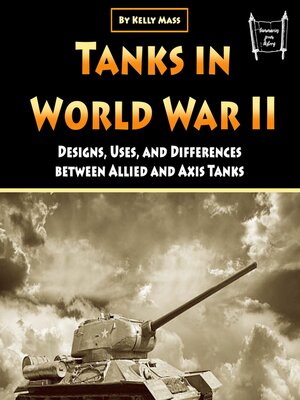Tanks in World War II
audiobook (Unabridged) ∣ Designs, Uses, and Differences between Allied and Axis Tanks
By Kelly Mass

Sign up to save your library
With an OverDrive account, you can save your favorite libraries for at-a-glance information about availability. Find out more about OverDrive accounts.
Find this title in Libby, the library reading app by OverDrive.



Search for a digital library with this title
Title found at these libraries:
| Library Name | Distance |
|---|---|
| Loading... |
This audiobook is narrated by a digital voice.
World War II marked the coming of age of armored warfare, transforming tanks from the experimental weapons of World War I into the dominant force on battlefields across Europe, Africa, and the Pacific. The period from 1939 to 1945 witnessed an unprecedented evolution in tank design, tactics, and employment that fundamentally changed the nature of land warfare and established principles of mechanized combat that continue to influence military thinking today. The war began with relatively simple tank designs and basic tactical concepts but ended with sophisticated armored vehicles and complex combined-arms operations that demonstrated the full potential of mechanized warfare.
The philosophical foundation for armored warfare had been established during the interwar period by visionary military theorists like Heinz Guderian in Germany, Charles de Gaulle in France, and J.F.C. Fuller in Britain. These theorists argued that tanks should be concentrated in independent formations capable of conducting rapid, deep penetrations of enemy defenses rather than being dispersed among infantry units as mobile pillboxes. Their concepts emphasized speed, surprise, and the concentration of force at decisive points, principles that would prove revolutionary when implemented on the battlefields of World War II.
Germany entered the war with perhaps the most advanced understanding of tank employment, having developed the concept of Blitzkrieg or "lightning war" that integrated tanks, motorized infantry, artillery, and close air support into coordinated combined-arms formations. The German panzer divisions that invaded Poland in September 1939 demonstrated the devastating effectiveness of concentrated armored formations operating with air support and artillery coordination. These early campaigns established patterns of tank employment that would influence armored warfare throughout the conflict.







